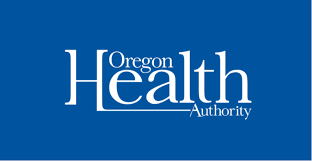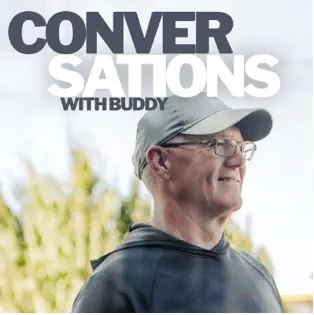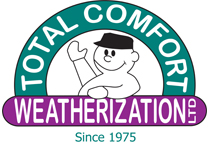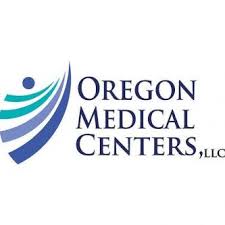ORTLAND, Ore.—Drug overdose deaths in Oregon more than doubled between 2019 and 2021, with the increase driven largely by misuse of the powerful synthetic opioid fentanyl, an Oregon Health Authority (OHA) analysis has found. Preliminary data indicate that this trend has continued in 2022.
Over the last 30 months, fentanyl has become a leading cause of overdose deaths, particularly among people who don’t have access to harm-reduction services. This trend is prompting urgent requests for supplies of naloxone, the rescue drug that rapidly reverses an opioid overdose.
“We are seeing a critical need for naloxone as many communities experience dramatic increases in overdoses due to fentanyl misuse,” said Dean Sidelinger, MD, MSEd, health officer and state epidemiologist at OHA. He noted that many counties have reported multiple opioid overdoses over the last several weeks, and that there has been a corresponding demand for naloxone. “We encourage everyone in Oregon to educate themselves and their loved ones—including young people—about the importance of naloxone, how to use it in an overdose emergency, and where people can access it.”
In 2021, nearly a third of Oregon’s counties saw more people die from fentanyl overdose than overdose from any other drug, OHA analysts found.
An overdose is always a medical emergency. Individuals should call 911 immediately after administering naloxone, and be aware that it may take multiple doses of naloxone to reverse the overdose. Oregon’s Good Samaritan law protects the caller and the person who has overdosed against possession and paraphernalia charges.
People who are taking prescription opioids should ask their health care provider or pharmacist for a naloxone prescription. Health insurance may cover the cost of naloxone. Individuals who want to have naloxone on hand for someone else should ask their pharmacist for a prescription. While health insurance usually will not cover this, coupons may be available online to offset the cost.
OHA’s Naloxone Rescue for Opioid Overdose webpage contains naloxone frequently asked questions and a map showing Oregon pharmacies that distribute the medicine. Anyone actively using opioids, or other illicit substances, can get naloxone and other harm-reduction materials at no cost through syringe service programs. Syringe service programs are available to anyone who uses drugs, regardless of whether they inject them. Here is OHA’s list of syringe and needle exchange services available in Oregon.
In addition, OHA is issuing the following warnings to people who use drugs:
- Unless a pharmacist directly hands you a prescription pill, assume it is counterfeit and contains fentanyl.
- Assume any pills obtained from social media, the internet or a friend are counterfeit and contain fentanyl.
- If you are using pills, don’t use alone and always have naloxone on hand and visible.
- Test your drugs with fentanyl test strips before you use them. Fentanyl test strips can often be accessed at local harm-reduction sites.
A review of State Unintentional Drug Overdose Reporting System (SUDORS) and Oregon death certificate data by analysts from OHA’s Injury and Violence Prevention Section found that unintentional/undetermined drug overdose deaths increased from 496 in 2019 to 1,072 in 2021. The 2021 figure doesn’t include all fourth-quarter overdose deaths, which are still being tallied and analyzed.
Unintentional/undetermined fentanyl overdose deaths jumped more than 600% between 2019 and 2021, from 71 to 509, respectively. Of unintentional/undetermined drug overdose deaths in 2021, 47.5% were due to fentanyl; in 2020, fentanyl caused 32.1% of overdose deaths; in 2019, the drug was responsible for 14.3% of overdoses.
Overall, unintentional/undetermined overdoses from opioids, including fentanyl and heroin, also rose sharply during that time, from 280 to 739 deaths – a 164% increase. Unintentional/undetermined stimulant – methamphetamine – overdoses were up two-fold, from 325 to 658 deaths from 2019 to 2021.
While exact reasons for the overdose increases are unknown, public health officials have long suspected that disruptions to daily life due to the COVID-19 pandemic have been a factor. Those with substance use disorder have been hit particularly hard by job losses, school closures and social isolation resulting from restrictions put in place to limit exposure and transmission of the virus.
The COVID-19 crisis also interrupted ways people with substance use disorder can get help, such as mental health services, 12-step programs and ambulatory visits, Sidelinger says.
But an increase in availability of fentanyl also is a factor in Oregon’s overdose increases. According to an April 2022 bulletin by the Oregon-Idaho High Intensity Drug Trafficking Area (OR-ID HIDTA), 40% of all counterfeit pills in circulation contain fatal amounts of fentanyl. The OR-ID HIDTA seized 1.5 million counterfeit pills in 2021, a 51% increase from 2020 and a 137% increase from 2019.
OHA is taking steps to reduce drug overdose deaths:
- OHA, in collaboration with OR-ID HIDTA, is working with public safety and public health partners to implement Overdose Mapping and Application Program (ODMAP), a real-time suspected overdose surveillance data system to mobilize an immediate response to a sudden increase in overdose events in local communities. HIDTA has recently found a large number of narcotic pill seizures by participating law enforcement agencies that appear to be pharmaceutical narcotics like oxycodone but are likely counterfeits containing fentanyl.
- Oregon established a Harm Reduction Supply Clearinghouse to support agencies that serve people at risk of overdose, including offering community-based outreach, prevention and harm-reduction programs, withdrawal and substance use treatment programs, and rural and frontier first uniformed responders across Oregon. Currently, there are 127 organizations set up to order harm-reduction supplies online through the Clearinghouse. Organizations participating in the Clearinghouse have ordered nearly 130,000 doses of naloxone and other supplies, including syringes, wound care, PPE, disinfectants and personal hygiene products (to prevent COVID-19 and treat wounds).
- The PRIME+ (Peer Recovery Initiated in Medical Establishments) program provides peer-based harm reduction support for persons currently using drugs who present to medical settings. The program goals are to reduce overdoses and infections related to harmful drug use. PRIME+ peer support specialists assist people who are using drugs to access naloxone, safer use supplies, HIV and hepatitis C testing, primary care and substance use treatment, and more. The PRIME + program operates 23 sites in 20 counties in Oregon and has reported more than 20,000 contacts with community members and provided harm-reduction-centered peer support to more than 3,400 people who are using drugs in participating counties since January 2021.
- About 10,000 to 11,000 patients in Oregon are receiving methadone through Oregon’s opioid treatment providers (OTPs). Most OTPs are concentrated along the Interstate 5 corridor serving Oregon’s four largest metropolitan areas, although federal funds have helped with expansion to rural and frontier areas, such as the Oregon Coast, and central and eastern Oregon. As of spring 2022, Oregon also had about 2,100 practitioners federally certified to prescribe buprenorphine for treating opioid use disorder, although only around half of providers choose to use their certifications in any given year. Despite expansion efforts, coastal and rural communities in Oregon are still lacking in access to medication for opioid use disorder (MOUD) in many cases.
Health officials are reminding people that opioid use disorder can be successfully treated. Those who need help to stop using opioids can talk to their health care providers or view OHA’s list of resources. In addition, Oregon law allows lay people to carry and use naloxone, a medication that can be used to reverse an opioid overdose, on other people. Learn more about naloxone. If a person is using substances alone, the Never Use Alone Hotline 800-484-3731 can be a nonjudgmental and lifesaving point of contact for emergency services.
Oregon-based nonprofit Lines for Life and OHA recently launched the Safe + Strong Helpline at 1-800-923-4357 (800-923-HELP). The line offers free, 24-7 emotional support and resource referral to anyone who needs it—not only those experiencing a mental health crisis. The Safe + Strong Helpline is a response to needs for emotional support around disasters like COVID-19 and wildfires and was funded by the CARES Act. Callers are routed to a counselor who can provide emotional support, mental health triage, drug and alcohol counseling, crisis counseling or just connection.
###












